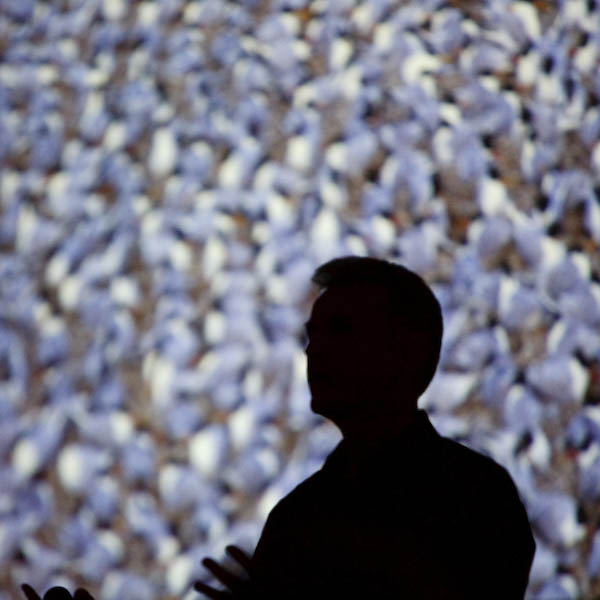Art
Wolfe Creative Session
Notes by Fredo Durand
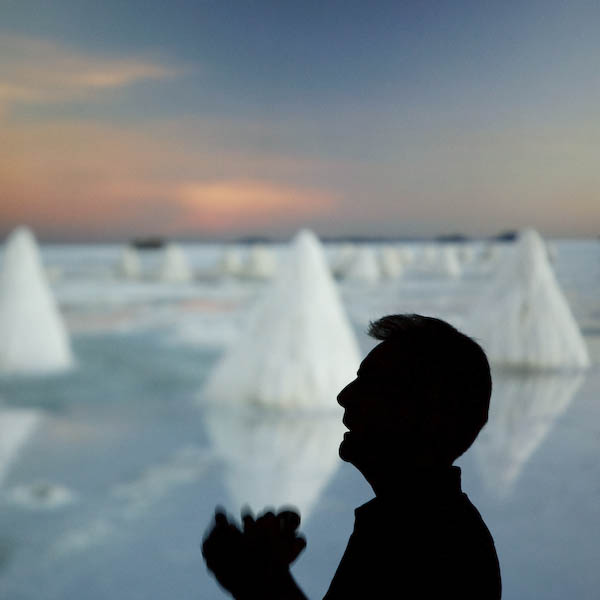
Art Wolfe in front of a slide
I attended one of Art Wolfe's two-day seminars and here is an informal review and notes. My notes focus more on technical aspects, but this is really not representative of the seminar, which focuses on the artistic side of photography.
In addition to these notes, I have put online the outline of Art's session with a tiny amount of notes.
For Art's bio see here, wikipedia entry here, and photos can be seen here. Quality is currently terrible but he said it would be overhauled soon. Skip directly to Africa, The Living Wild or Edge of the Earth, Corner of the Sky. More photos are available at his Microsoft site. There is a good interview at betterphoto and another one at seattlepi.com. His Canon web page has shooting advice. And i just found that other page with an interview, and yet another one. See also Art's blog and a podcast featuring him.
Review:
should you attend?
The quick answer is a resounding yes.
Who should attend: quick answer, anyone who likes beautiful pictures, whether you are a serious photographer or not. In fact, even if you have never taken a photo in your life and never not intend to, it's still worthwhile just to enjoy Art's photos and his comments. Because they are not overly technical, the sessions are great for non-photographers as well. I had invited my girlfriend who usually leaves picture taking to me and she really enjoyed the week-end.
What the session delivers is inspiration. Art goes through a number of elements that come into play to generate his amazing images. He groups them by theme and mostly inspires though example, showing a series of pictures that illustrate a given theme. For example, he will show many images where the telephoto enables the isolation of details and simplification of the composition, often contrasting them with wider-angle shots of the same scene that are not as effective. Or he would show examples where front light results in great images, followed by another series where backlight creates the mood. You can find a lot of those themes (telephoto to isolate, telephoto to compress perspective, etc.) in many books and I certainly have read about them a number of times. But it's really not the same to see it illustrated by Art's beautiful pictures and accompanied by his lucid and passionate narration. I have put the outline of the session (all the themes) on a separate web page. See also the summary of the sessions on Art's web site.
Do not expect very technical lectures. He does talk about depth of field and shutter speed, but mostly through their visual effect. He does not discuss all forms of exposure metering and won't teach you the Scheimplug principle. He is mostly an artist and is not interested in geeky technical details. He however brings with him a talented staff that can answer most of those questions if the audience asks them.
You will not find long dissections of shots with all the image parameters, although he will often tell the aperture and will answer the question when asked.
His goal is to provide enough elements, situations, themes that will help the audience be inspired in the field. The organization of those aspects flows very well and the amazing pictures are a striking support.
Art is a very good speaker and the slide show is very professional and beautifully put together. He is very inspirational. I found his amount of comment on a picture just the right amount. He articulates well why he thinks a particular element makes and image stronger but does not go on and one in image critique. I am usually a terrible audience who cannot stay focused for a 20-minute talk but I went through the two days of lectures riveted to the screen. I have seen a lot of speakers and he is certainly one of the best ones.
In addition to Art, the sessions include two talks by John Greengo about equipment and travel, and one introduction to Lightroom by Rick Holt. These were well-executed talks as well, but because those topics are more technical, it was harder to strike a balance depending on the audience's level. I personally did not learn much there, but I am a geek and spend way too much time reading about equipment and software.
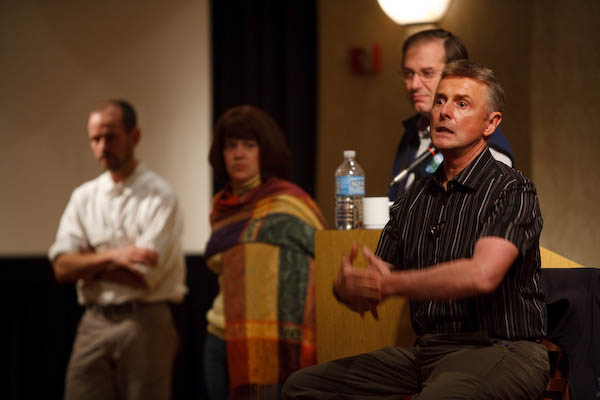
Art and his team.
Art and composition
He mentioned how inspired he was by painting, in particular the Renaissance and 19th century artists.
Get high (vertical shots from above or below) or get low. He gets really low (10 cm from the ground). This means in particular that you need a tripod that can lay flat and has no central column.
Turn images upside down, in particular for stuff that falls. It then look more dynamic.
He always tries to shoot stuff the way he's never photographed it before, the way no one has photographed it.
He only recently (a few years) discovered shallow depth of field effects.
He almost never shoots in the middle of the day.
He always has multiple book projects along the way.
He is very good at switching topic or goal. He says that 20% of his shots are planned (he knew going there he wanted that type of shots) and for the rest he adapts. He showed us an example where he went out to do landscape shots in the mountains but the weather was not great. He looked around and found some amazing colors on the surface of a little brook and ended up composing amazing macro still lifes.
He composes shots and might move elements around. He showed us examples of a moose antler he moved around the landscape to find a good composition, or a small iceberg he brought on the shore of a lake.
He loves the light 2-3 minutes before sunrise or 2-3 minutes after sunset in dry places such as deserts or high mountains because of the light color.
The topics and elements of creative photography are listed on on the outline of the session.
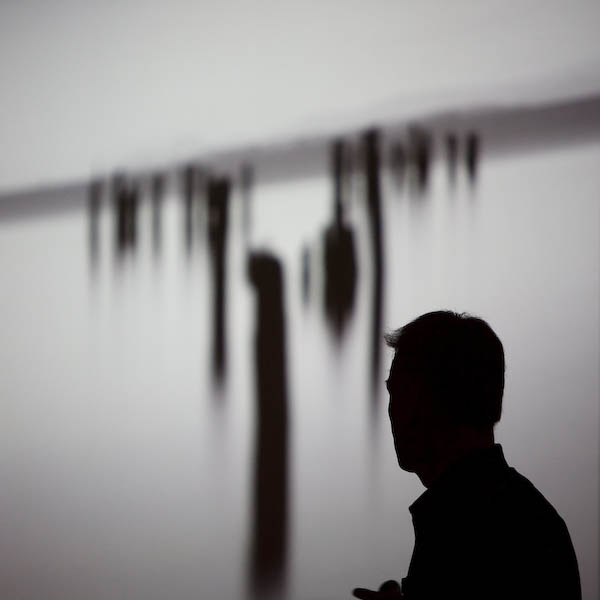
Technique
Art is above all an artist and certainly not a camera geek. He usually referred technical questions to his staff and would joke that he really did not understand questions. When someone asked about AF points he said 'oh, you mean the little red dots?' or he asked about the histogram 'is that the little mountain shape?' While he was exaggerating his ignorance, he is not a geeky power user who knows all the menus.
Most of his pictures are: f/22, polarizer, 2 to 4 graduated neutral density filter. He sometimes uses two 2-fstop graduated NDs, which gives him a 4-f-stop graduated ND. This clearly explains the surreal look and colors of some of his pictures.
He sometimes uses the holder of the graduated ND, sometimes he just holds it in front of the lens, in particular for wide angle shots where the holder could show. Unfortunately, when holding the filter it's common to scratch it against the lens and he goes through graduated ND quickly.
Whenever he uses a graduated ND, he has the polarizer on. In fact, unless he really needs higher shutter speeds because of motion, it's unlikely that he removes the polarizer from a lens.
The polarizer gives him darker stronger skies and brighter colors because it cuts off the white reflections (highlights) from surfaces. He uses it even with wildlife, if there is not too much motion and he can afford a slow shutter speed.
In the analog days, he would use a warming polarizer, especially for flowers. Now, it's easy to warm things during post-processing.
He has sometimes used cross-polarization but not often and he does not encourage it.
He does a lot of fairly long exposures, in the one-second range. For some of his night pictures with the stars, he could use between 30s and 8 hours! He sometimes paints with a flash light as in the cacts/trail trail photo in Edge of the earth, corner of the sky.
Even for animals, he would use exposures up to a second. He points out that animals often stay very still very long. Again, the key is to always use a tripod.
He has photos of the sea using 10-minute exposures where the waves completely blend and give a very hazy smooth appearance. He takes such shots after sunset. He would often setup the shot and focus while there is still light and take the picture later.
The lenses he uses most are the wide angle (16-35mm) and telephoto (70-200 f/2.8 or, more and more, f/4). He also uses the 400mm f/4 DO. He rarely uses standard focal lengths.
Most of the time, he relies on the camera's multisegment or matrix exposure.
He is a Canon shooter and shoots with the 1Ds Mark III.
By using a tilt-shift lens, he manages to use f/11 for some of his shots with a crazy depth of field, where you see flowers about a feet away as well as mountains in the background.
He uses a tripod 95% of the time. Exceptions: aerial shots, shots in crowds or markets where he wants to be less conspicuous.
He tries to be at ISO 100, sometimes goes all the way up to ISO 400.
With digital, they do increase saturation and contrast (S curve), but he did not elaborate. He actually does not do this himself and has assistants.
He now does multiple-exposure photography for high contrast scenes, but never more than two exposures. He does not use automatic HDR merging and tone mapping but manually blends exposures.
He said that his best technical advice is to wait long enough when you use mirror lockup. He took a number of shots that were blurry because he did not fully wait for the vibration due to the mirror to stop. It's particularly easy to get impatient when doing a panorama (I certainly know what he means, as I have screwed up a number of my panos in Italy because I pressed the shutter release only one second after the mirror locked up).
For portraits, he adapts his aperture depending how much the subject moves.
He said that one advantage of film is that you can do 8-hour long exposures, which is nice for night sky star trails. On the other hand, with digital you have enough sensitivity to do 30 second exposure which is the limit to get sharp pointy stars.
For aerial shots, I think he mentioned going as low as 1/250s, which surprised me since I though below 1/1000 would lead to blur.
I asked how he focused with a tilt shift lens and said he focuses first and then tilts. He just tilts progressively and just sees in the viewfinder when he gets the appropriate angle.
I asked him what new features or improved capabilities in cameras he would like. He was thrown off by the question and it's clearly not something he's interested in. He mentioned higher memory card capacity and faster downloads. Someone in the audience shouted higher dynamic range and he agreed, but it was more politeness that something he seemed to care about.
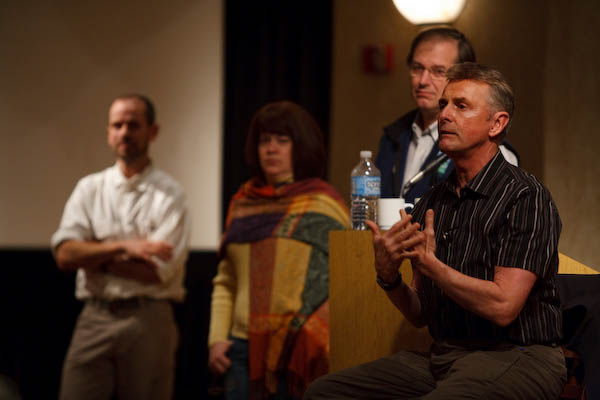
Workflow,
team, career
All his post-processing is delegated to members of his team. He will play with retouching on his laptop in the plane on the way home, but these are never final versions. They are just used as indication by his retouchers.
He has 11 employees working with him.
He seems to be very good at delegating and letting his staff be in charge of their part of the job.
For series where he has subtle variations of a shot, if it's for one of his book projects, he makes the final decision which one is kept. Otherwise, he typically lets his staff pick.
He's been shooting for 30 years.
He takes about 10,000 pictures a month, and the majority are keepers.
He started by exhibiting photos at local outdoors stores such as REI. Some photos sold, that kept him going. For a long time, he could not afford to travel international.
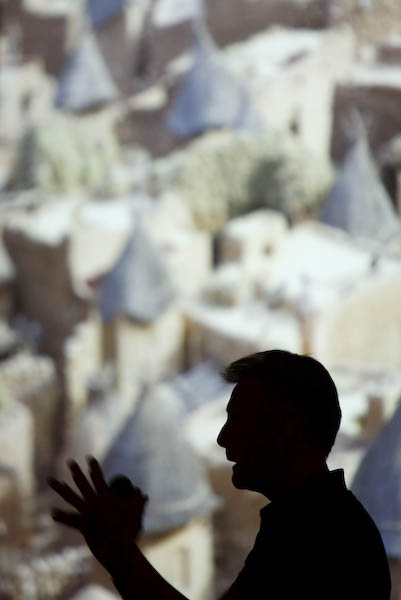
Travel
When visiting remote cultures, he always has a local interpreter/guide. He can find them through his network of photographer friends, or sometimes even by searching on the web.
For most of his trips to Antarctica, he went on regular cruise ships. Yet he never had any trouble getting where he wanted when he wanted, and never felt bothered by other passengers. He mentioned times where he went to shore around 4am, and said that everybody is friendly and is there for the same thing.
He is an average of seven months a year on the road.
They carry what they can as carry on and when they need to check stuff in, they first put it in a rigid box, which they then put in a duffel to make it look less conspicuous.
His favorite North-American location is the arctic. Other places he particularly recommends: Patagonia, South Georgia, and Alaska, in particular Denali and Wonder Lake around the last week of August.
His least-favorite location is Russia (Siberia). He had a terrible experience there in the 80s, in particular die to the lack of food.
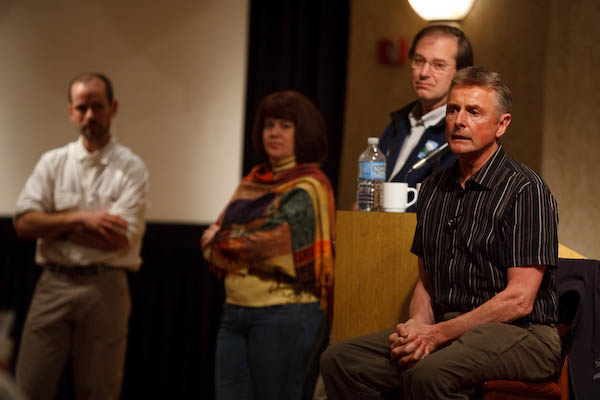
TV show
Art has a TV show called 'Travels to The Edge with Art Wolfe.' They showed a behind the scene and one episode. They go to various exotic countries and give you a sense of the scenery and culture. The episodes are about 24 minutes and fast paced. You don't get a lot of depth but a beautiful impression of the place. We follow Art as he takes his pictures and it's nice to see the photographer in action. However, don't expect any technical photographic discussion.
The show has a budget of 2 million dollars for one season. It is paid by sponsors (Microsoft mostly) and they give the show to the stations for free. They say they make no money on the show. It's just good to advertise their work (and I guess he also pays for the trip to locations where he can take pictures). They work cheap, travel coach, etc. They had to cancel a segment on Indonesia last year because gas prices were making the multiple flights required to go from island to island prohibitive.
They travel with a team of four people. Art is the host and takes pictures. He has two videographers and one assistant/photographer/organizer/jack of all trades. They shoot with prosumer Canon HD camcorder (the H1 series).
They seem to work well as a team although there seems to be a fair amount of tension between Art's focus on his photography and the video production.
